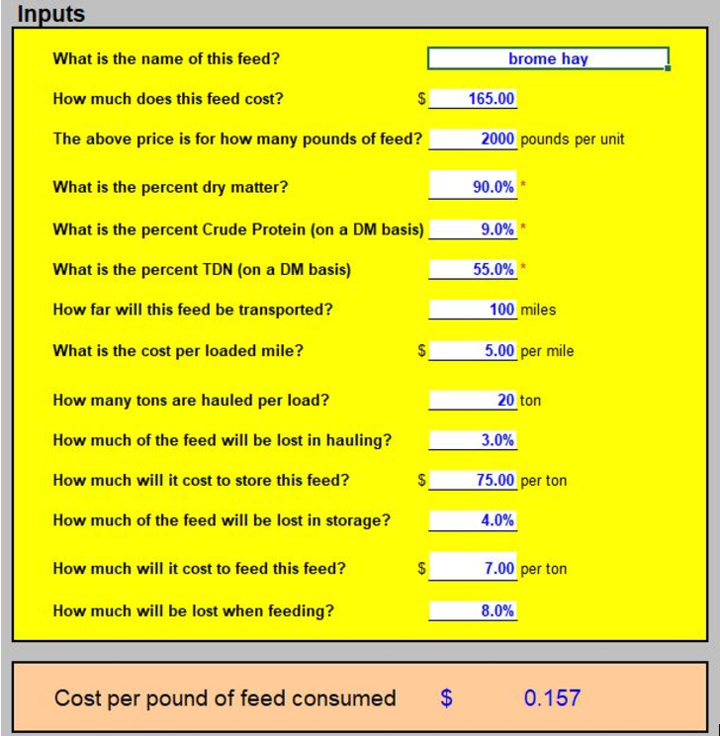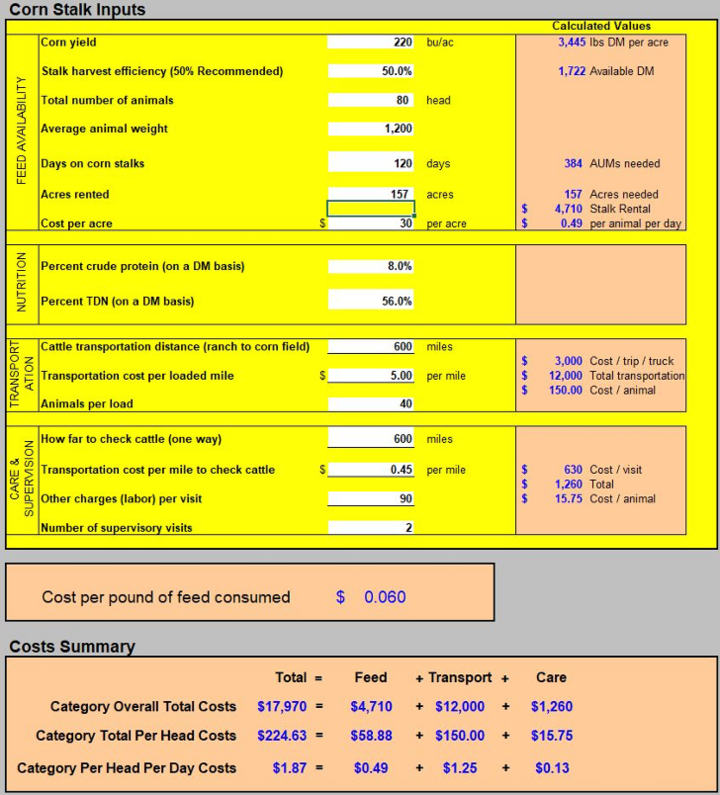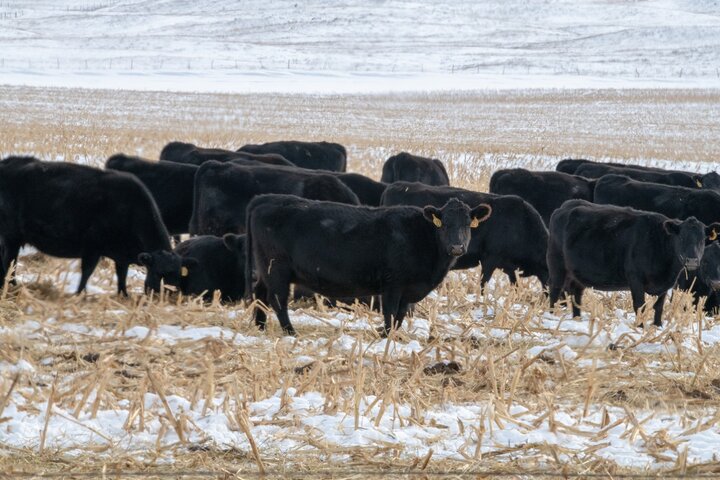Part of the winter feed expense equation is deciding whether standing forage can be grazed, or hay must be fed. In dry years, winter grazing may be reduced or unavailable, and the value of what is available can increase. Winter feed not usually considered may offer an alternative, affordable option. UNL’s Feed Cost Cow-Q-Lator (available at cap.unl.edu/livestock/tools) offers a way to compare feed options.
For this example, the herd consists of 80 spring-calving cows weighing 1,200 lb and monthly winter pasture costs $45/cow or $1.50/day. Consider winter pasture is limited and/or hay must be fed for an extended period. At $165/ton in the field or $0.08/lb, a cow consuming 30 lb/day would rack up a $2.40 daily feed bill. Add in the hay waste and hay delivery and the cost increases to $0.157/lb. of feed consumed or $4.71/day for one cow.

Corn residue offers another winter feed option. If stalks are renting for $30/acre and a stocking rate of about 2 acres/cow is used, daily costs calculate to $0.49/cow. This makes corn residue the more affordable option, but what about cows several hours from corn fields?
Assuming the same 80-cow herd resides 600 miles from corn residue, what would be the daily cost for each cow? Figure 2 shows how this scenario may pencil out.

In this scenario, trucking cows to the corn residue field was valued at $150/cow for a 1,200-mile round trip. Grazing corn residue for 120 days was calculated at $58.88/cow. Two supervisory visits to the cattle were valued at $15.75/cow (2 trips x 1,200 miles x $0.45/mile plus $90 for labor/other charges per visit). Total winter cost for this corn stalks grazing scenario comes out to $224.63/cow. To compare each scenario, feeding brome hay (Figure 1) for 120 days would cost $565.20/cow.
Assuming winter range is available for 60 days of grazing at $1.50/day for a total of $90/cow, and hay is fed for 60 days at $4.71/day for a total of $282.60/cow. Winter feed costs calculate to $372.60/cow, still considerably more than grazing corn residue as assumed in Figure 2.
Each winter-feeding option has risks not accounted for in these scenarios. Download UNL’s Feed Cost Cow Q Lator at cap.unl.edu/livestock/tools and use inputs suitable for your operation.
For more information on grazing corn residue please visit https://beef.unl.edu/. Additional analysis on grazing cornstalks is available at beef.unl.edu/beefwatch/2021/how-far-too-far-transport-cows-winter-cornstalks .
Download Feed Cost Cow-Q-Lator (Excel)
Interviews with the authors of BeefWatch newsletter articles become available throughout the month of publication and are accessible at https://go.unl.edu/podcast.
Topics covered:
Forage crop systems, Crop residues, Corn, Nutrition, Winter/cold

